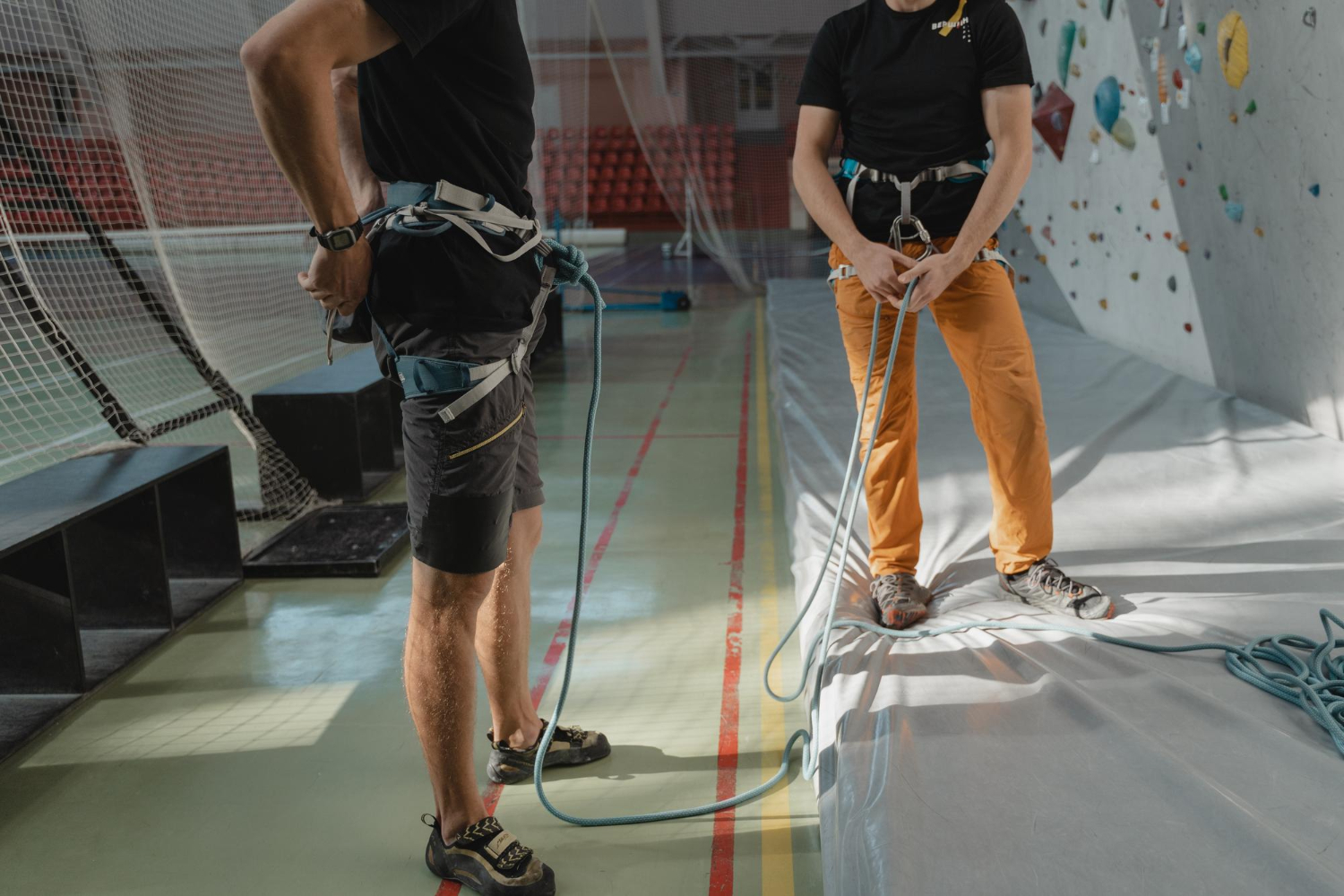Dress to Climb: A Beginner’s Guide to Bouldering Apparel
Bouldering, a form of rock climbing performed on small rock formations without ropes or harnesses, has exploded in popularity in recent years. As a beginner, having the proper clothing and gear can make a big difference in your comfort, mobility, and safety on the rock wall. This article will provide key considerations for putting together the ideal bouldering wardrobe.
Clothing Essentials
Now that we understand the importance of proper attire, let’s delve into the specific clothing items that are essential for bouldering.
- Upper Body. For the upper body, it’s advisable to wear a moisture-wicking, breathable shirt. This helps to keep you dry and comfortable during intense climbing sessions.
- Lower Body. When it comes to the lower body, opt for stretchable, durable pants or shorts. These should allow for a full range of motion without being too baggy, as excess fabric can get caught on holds.
- Fabrics. The choice of fabric is crucial. Synthetic materials like polyester are generally preferred over cotton, as they are more breathable and quicker to dry.
- Footwear. Specialized climbing shoes are a must. They should offer a snug fit without causing discomfort, and the soles should provide excellent grip.
For clothing, focus on comfort, range of motion, and moisture management. A breathable shirt, stretchable pants or shorts, and specialized climbing shoes are the key items to consider.
Essential Clothing and Gear for Bouldering
| Item Category | Essential Items | Purpose |
|---|---|---|
| Upper Body | Breathable, moisture-wicking shirt | Comfort and moisture management |
| Lower Body | Stretchable pants or shorts | Range of motion |
| Fabrics | Synthetic materials like polyester | Breathability and quick drying |
| Footwear | Specialized climbing shoes | Grip and comfort |
| Additional Gear | Chalk and chalk bag | Improved grip |
| Crash pad | Safety for outdoor bouldering | |
| Finger tape | Finger support | |
| Knee pads | Extra protection |
Shoes
Having a good pair of bouldering shoes is arguably the most important gear decision you’ll make. Bouldering shoes have a flat, close-fitting sole that allows you to smear against the rock and feel out tiny foot chips and edges. The upper is also snug to maximize precision and transfer energy to the rock. While tight, a good pair shouldn’t be painfully constricting. Leather or synthetic leather uppers will stretch and mold to your feet over time. Make sure to try on a variety of sizes and models to find the best fit. Shoes specifically designed for bouldering will have adequate toe room while still being performance-driven. Avoid running or tennis shoes, which lack the structure and sensitivity required for bouldering. Investing in high-quality shoes will enhance your climbing technique and prevent injury.
Chalk Bag
Chalk helps keep your hands dry for optimal grip strength on the rock. A chalk bag lets you conveniently access chalk during a climb. Look for bags with a wide opening and deep well so you can easily dip your hands inside. The outer closure should seal tightly so chalk doesn’t spill out. Consider features like brushed fleece lining to prevent chalk clumping and multiple interior pockets to store personal items. Belts, strings or plastic clips allow you to fasten the bag comfortably at hip level. Make sure the bag isn’t overly bulky or heavy.
Clothing
When it comes to clothing, breathable, flexible fabrics are key. Form-fitting shirts and pants allow full range of motion without getting snagged. Stretchy synthetic blends like spandex are ideal choices. Avoid loose shirts or baggy pants that could impede your climbing. Leggings or tights are great options for women. For men, consider climber’s pants designed with gusseted crotches, which maximize stride length. Outer layers like hoodies or light jackets can help keep muscles warm between climbs. Look for zip-up designs for easy on/off. Avoid jackets with Velcro or loose drawstrings that could catch on rock. Durable, grippy climbing shoes will protect your feet.
Harness
While bouldering at low heights typically doesn’t require ropes or harnesses, an adjustable bouldering harness is recommended for beginner climbers practicing on higher walls and overhangs with crash pads below. They provide security if you happen to slip or lose your grip. Look for lightweight, flexible, non-bulky harnesses optimized for mobility. Leg loops should be snug but not restrictive. Make sure the harness fits properly over your clothes. Unlike rock climbing harnesses, bouldering harnesses lack all the gear loops and anchor points required for ropework. Keep it simple.
Crash Pads
For bouldering safety, invest in a good crash pad to cushion falls and landings. High-density foam distributes impact. A comfy top fabric helps you stick your landing. Make sure the pad is appropriately sized – larger is better for high climbs. Folding hinge designs make pads highly portable. For added protection, you can layer two pads or spot them strategically. Handles make it easier to reposition pads between climbs. Closure straps keep pads neatly folded. While not required, having a crash pad builds confidence and allows you to push your limits, improving your skills.
The proper footwear, chalk, clothing and safety gear will enable you to climb with comfort and confidence as a beginner. While bouldering requires minimal equipment compared to rope climbing, the right wardrobe choices make a big difference. With shoes hugging your feet, chalk drying your hands, and breathable fabrics keeping you cool, you’ll be prepared to tackle any bouldering wall or rock face. Equipped in clothing specialized for freedom of movement and grip, you can focus on technique, building strength, and appreciating the thrill of the climb.
In general when starting out bouldering, carefully choose performance-driven shoes, chalk bags, clothing and harnesses optimized for flexibility, grip, and mobility. Investing in quality gear designed specifically for the demands of bouldering will maximize your comfort, safety and enjoyment as you take your climbing to new heights.

